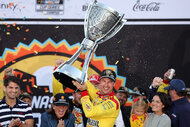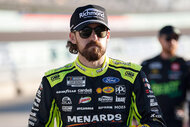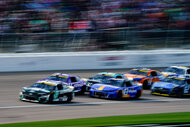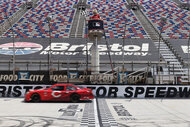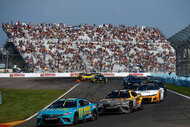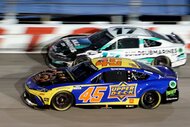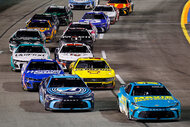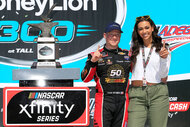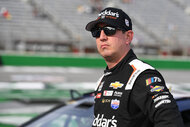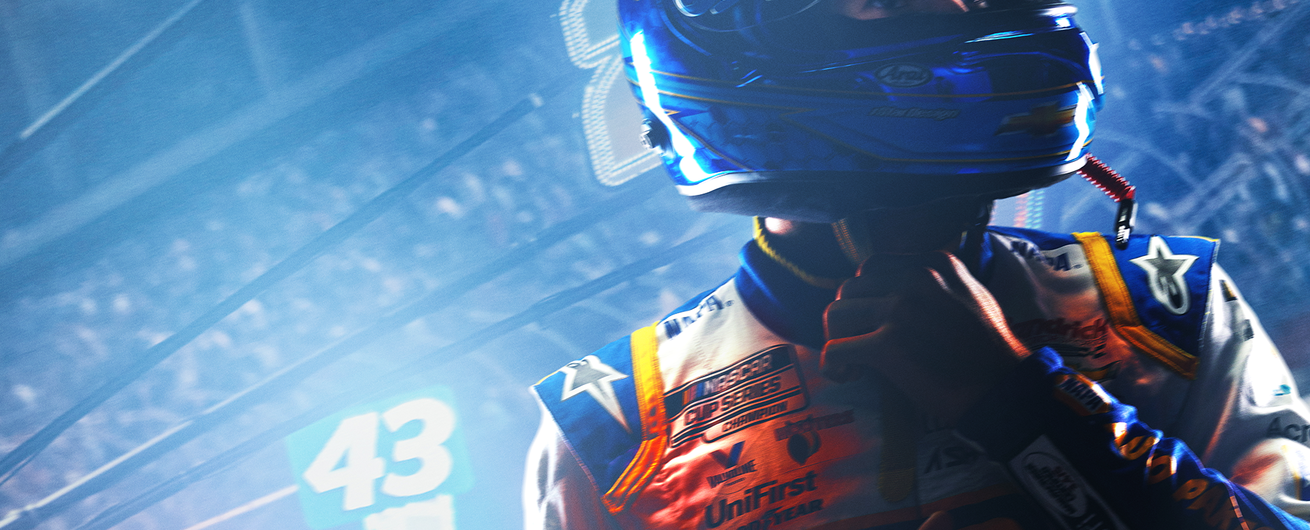How NASCAR’s Science Of Speed Is Continually Evolving
Perhaps no sport is more reliant on scientific advancement than NASCAR, both in terms of pushing the levels of competition, but also keeping its stars safe.

From the early days of North Carolina bootleggers to now, the world of stock car racing has seen unparalleled transformation over the decades. It’s one of the few sports that, since its origin, has been on a non-stop trajectory of science-driven change, in part, because it had to evolve to survive. With the potential for danger constantly lurking or, even worse, reminding us on race day of its omniscient presence, safety is of paramount importance for both driver and league executive. This critical need takes center stage while drivers, teams and the league brass also look to enhance competition and fan experience. The resulting marriage of these seemingly incompatible impulses represents a perfect blend of teamwork that illustrates how owners, athletes and rule makers can all work cohesively to achieve their goals. But it would never happen if not for the crucial role science plays in the sport’s continued development.
Whether it’s analyzing the aerodynamics of car panels, rendering new, polymer-based alloys or devising ways to combat those dreaded G-forces, scientific study and advancement is thoroughly embedded in the sport of NASCAR.
“The tech and everything about racing is science-driven,” explains Dr. Amy Lynn Oldenburg, who teaches physics at the University of North Carolina at Chapel Hill. “What excites me about this is the data acquisitions systems in the cars – we know exactly the trajectory of the car, what inputs we’re putting in for the steering, the pedals. Then I can objectively look at did my technique help me go faster.”
In addition to the data acquisitions systems, Oldenburg, who is also a race car driver herself, details why she’s fascinated with the field of aerodynamics when it comes to racing.
“Aero is a very complex subject. In terms of what aero gives you, aero is good and bad,” Oldenburg says. “So anytime you’re driving through air, that has a drag, and that drag is always bad because it’s against your direction of motion.”
Despite the intrinsic effects of drag on a race car, Oldenburg says there are ways to combat it.
“You [NASCAR engineers] shape the car so the pressure causes more down force, and down force means more grip,” she explains. “Grip is a friction force. It’s the force you use to propel the car off of the pavement.”
“You can have more friction force if your tires are sticking to the pavement rather than slipping,” she says. “We call this static friction as opposed to kinetic friction. It’s directly proportional – the more weight plus down force you have, the more grip you have.”
Forest Reynolds of Reynolds Racing echoes Oldenburg’s thoughts on the vital impact of aerodynamics in NASCAR, detailing how his company, a performance racing chassis-manufacturing business, tackles the issue.
“Aero plays a major part in what we do. We’re trying to redirect air to stay under the car,” Reynolds says. “You don’t want a lot of turbulent air reaching up inside the fender well and the underbody.”
“When you get on the track, you really want the car sealed off and keep all the air flowing over the car, and what you do have coming through and under the car – you want it to be as efficient as possible to not create any drag and maximize your down force,” Reynolds says.
But aerodynamics is only one element of the highly complex scientific stew that plays such a critical role in NASCAR. Throngs of engineers and safety protocol officials pour over streams of data in order to make better informed decisions, but sometimes the resolution reached isn’t a universally appealing fix as is the case with the advent of the Next Gen car. What was thought to be the answer to elevating the competitive element to racing by making drivers focus on their instinct and skill has had its share of bumps over this Cup Series season as a litany of crashes and fires involving many of NASCAR’s most notable drivers has sparked concern throughout the league.
“The overlying thing that makes the collisions more dangerous is the kinetic energy,” Oldenburg notes. “You’ve got to think about that if you’re designing a car.”
To put that into perspective, a normal passenger car traveling at a speed of 70 miles per hour generates 0.5 megajoules of kinetic energy, whereas a professional NASCAR race car performing at its top speed carries 12 times that – roughly the same amount of energy stored in 1.4 kg of the explosive TNT.
Some like Dr. Iain Cheeseman, who teaches cellular biology at the Massachusetts Institute of Technology, sees the science of his field playing an interesting role in stock car racing.
“An important feature of cells’ work is force – how they generate force; how they respond to force and sense force; how they withstand that force that’s placed upon them,” Cheeseman outlines.
“Scientifically and biologically, the unit of measurement we use is newtons. A weightlifter, for example, is able to lift in the range of 200 to 215 newtons. Jeff Gordon had experienced the third highest ranking G-force in NASCAR… calibrated at 64 Gs or 627 newtons,” he explains. “That’s a lot of newtons, so it’s a huge amount of force.
In Cheeseman’s field of cellular biology, researchers measures force on cells using piconewtons, with one piconewton equaling 10-12 newtons (in other words, really, really small). As he notes, forces above 10 to 20 piconewtons can create huge challenges and problems on an individual cellular level.
“Small forces can make a big difference, so I have no idea how Jeff Gordon dealt with that level of force,” Cheeseman laughs. “The forces in NASCAR are extreme, but at the same time, the way that we’re structured as people, our physiology, the way our cells are structured … we [people] do a good job dealing with trauma.”
Though humans, on a cellular level, may have an evolutionary advantage with cells’ physical resiliency, the optics of increasing crashes and car fires this season can be unsettling. Still, for Oldenburg, who has spent considerable time behind the wheel racing, she trusts science to help address those safety concerns.
“The cage designs have gotten better with every iteration. Every time there’s a crash, they examine how did cage hold up, can we add a bar here or redesign it to make it safer,” she says. “In terms of the tracks themselves, they keep redesigning the layout of where they put the tire barriers or guard rails to make the tracks safer.”
“Your personal safety equipment,” Oldenburg notes, “I mean I would not get in a car without a head and neck restraint. It’s such a simple thing, and it saves lives every weekend I would say.”
Despite those safety concerns, stemming from incidents involving, among others, Harvick, Joey Logano and Chase Briscoe, Reynolds is confident that, through inspections and adequate time to test problematic elements in NASCAR’s Next Gen car, the league will eventually fix things.
“They’re still working out the glitches,” Reynolds states. “They’ve had to do so much in such a short period of time – it will take a little while for it to get ironed out. Safety and speed just don’t match up well.”
Can't get enough NASCAR action? Watch “Race For The Championship,” which follows the lives of NASCAR's biggest stars on and off the track, Thursdays at 10/9c on USA Network. And catch up on all race action on Peacock







